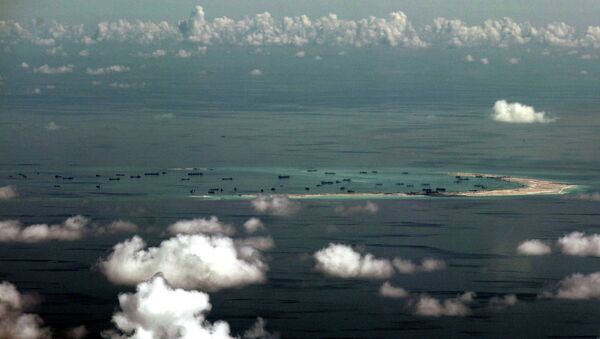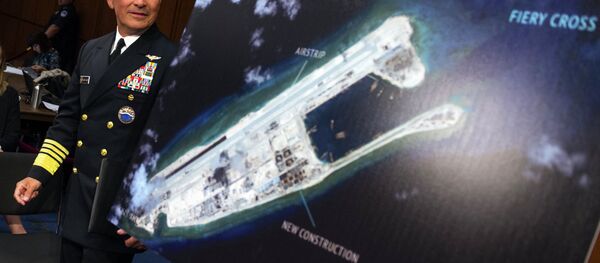Although the conflicting sides aren't ready for an all-out war against each other, any incident might potentially lead to a military escalation.
Last week, the USS Lassen, a US Navy missile destroyer, sailed through the disputed waters in the South China Sea in an attempt to challenge Chinese territorial claims. China strongly criticized the action and immediately issued a statement saying that it would take all necessary measures to safeguard its sovereignty and security.
"Here we deal with two wolves facing each other. On one side stands an old male, who's been the leader of the world pack for many years. On the other hand, we see a young wolf that wants to challenge the old leader," French historian Philippe Fabry explained using a simple metaphor.
The United States wants to show that it remains a hegemon in the Asia-Pacific region, despite China being a world power. Furthermore, in addition to putting pressure on China, Washington aims to reassure its allies in the region, Fabry said.
"The tension is considerable, the stakes are high," another French scholar, Alexandre Vautravers, told Atlantico.
If push comes to shove and the two superpowers start exchanging fire, the situation might be dire for Washington since the United States didn't increase its troops in the Pacific due to the US involvement in the Ukrainian and Syrian crises. Thus, by posturing up in the South China Sea the United States might be digging its own grave, Vautravers argued.
The Root of the Problem
Six countries, namely Brunei, the People's Republic of China, Taiwan, Malaysia, the Philippines, and Vietnam have overlapping claims to territory in the South China Sea. The disputes concern both the Spratly and the Paracel islands, two island chains claimed in whole or in part by a number of countries. Additionally, the maritime boundaries in the Gulf of Tonkin remain disputed.
Although largely uninhabited, the Paracels and the Spratlys may have reserves of natural resources around them.
China claims by far the largest swath of territory and says its right to the area goes back centuries to when the Paracel and Spratly island chains were regarded as integral parts of the Chinese nation, and in 1947 it issued a map detailing its claims. It showed the two island groups falling entirely within its territory.
Vietnam hotly disputes China's historical account, saying China had never claimed sovereignty over the islands before the 1940s. Vietnam says it has actively ruled over both the Paracels and the Spratlys since the 17th Century — and has the documents to prove it.
The other major claimant in the area is the Philippines, which invokes its geographical proximity to the Spratly Islands as the main basis for its claim to part of the disputed zone.
Both the Philippines and China lay claim to the Scarborough Shoal (known as Huangyan Island in China) — a little more than 100 miles (160km) from the Philippines and 500 miles (800 km) from China.






